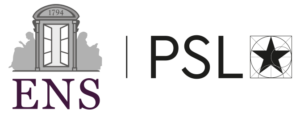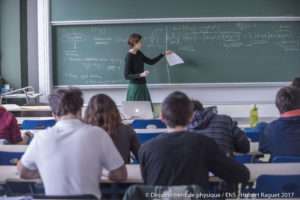Domenico Orlando came to the Institute in the fall of 2013. He had obtained his PhD in 2006 in Paris and had done postdocs in Milan, Tokyo and at CERN. His research [8] – [11] has mostly focussed on deformed supersymmetric gauge theories which have played a prominent role in recent years. While the deformations break part of the supersymmetry, the properties of the original theory are largely retained.
The resulting theories are thus more realistic than the original ones, while still being solvable. The best-known examples involve Ω-deformed N = 2 SYM theory which appears in the contexts of instanton localization, topological string theory, the AGT correspondence and the gauge/Bethe correspondence. Other interesting examples, also in relation with integrability, involve two- and three-dimensional gauge theories
with twisted masses.
In the past, together with various collaborators, D. Orlando has shown that these deformed supersymmetric gauge theories have a common string theory realization and can thus be analyzed via string theoretic methods. The great strength of this approach is that it provides a unique string theory origin for gauge theory deformations which were previously thought to be unrelated. During the last two years, he has been investigating the consequences of this realization and is currently working in the following directions :
The string-theoretical realization of the AGT correspondence : The intuition behind the AGT correspondence is that a 6d theory can be compactified on two or on four dimensions, yielding a 4d Ω-deformed gauge theory on S4 or Liouville field theory on a Riemann surface. Although compelling, this explanation has not yet been made precise in the literature.
Together with Lambert and Reffert [10], D. Orlando has proposed an explicit construction in which a 6d gauge theory describing the motion of an M5-brane compactified on a Riemann surface gives an Ω-deformed super Yang-Mills theory. The next step will be to reduce the 6d theory, integrating out the 4d part and identifying the relevant degrees of freedom whose dynamics is described by the Liouville field theory. An explicit construction would (a) turn the AGT conjecture into a theorem ; (b) identify precisely the limits of validity of the correspondence ; (c) pave the way to generalizations to other gauge theories and integrable models [9].
The Ω-deformed SW Lagrangian : The goal is to write an exact low-energy Lagrangian for the Ω-deformed Seiberg-Witten theory. Their approach is novel because it is completely based on the M-theory realization of the 6d (2, 0) theory.
In the undeformed case, the SW Lagrangian can be recovered from the equations of motion for an M5-brane wrapped à la Witten on a Riemann surface. They have already shown that the Ω-deformation is obtained when embedding the same M5-brane in a fluxtrap [11].
The idea is to combine these two constructions and derive the effective Ω-deformed action from the equations of motion in the fluxtrap. Currently, D. Orlando is also investigating gravity duals of deformed N = 4 super Yang-Mills theories.
Domenico Orlando has a large number of collaborators. He is working with people from ENS (Antonio Amariti and Costas Kounnas), as well as with various international collaborators : Susanne Reffert (Bern), Claudius Klare (IHES), Davide Forcella (Bruxelles), Stefan Hohenegger (Munich), Simeon Hellerman (IPMU), Neil Lambert (King’s College London), Kentaroh Yoshida (Kyoto), Alberto Lerda (Torino), Igor Pesando (Torino), Marco Billo (Torino), Marialuisa Frau (Torino).
After 2 years at the Philippe Meyer Institute, Domenico Orlando moved to the ITP at Bern University.

MENUMENU
- Laboratoire
-
-
LABORATOIRE

-
-
-
- Recherche
-
-
ASTROPHYSIQUE, COSMOLOGIE ET GRAVITATION
- Présentation
- Liste Equipes Axe Astrophysique, Cosmolgie et Gravitation
-
INTERACTIONS FONDAMENTALES
- Présentation
- Liste Equipe Axe Interactions Fondamentales
-
PHYSIQUE STATISTIQUE
- Présentation
- Liste Equipe Axe Physique Statistique
-
-
- Formation
- Diffusion des connaissances
-
-
DIFFUSION DES CONNAISSANCES

-
-
- Institut Philippe Meyer (IPM)
- Intranet
Sélectionner une page







